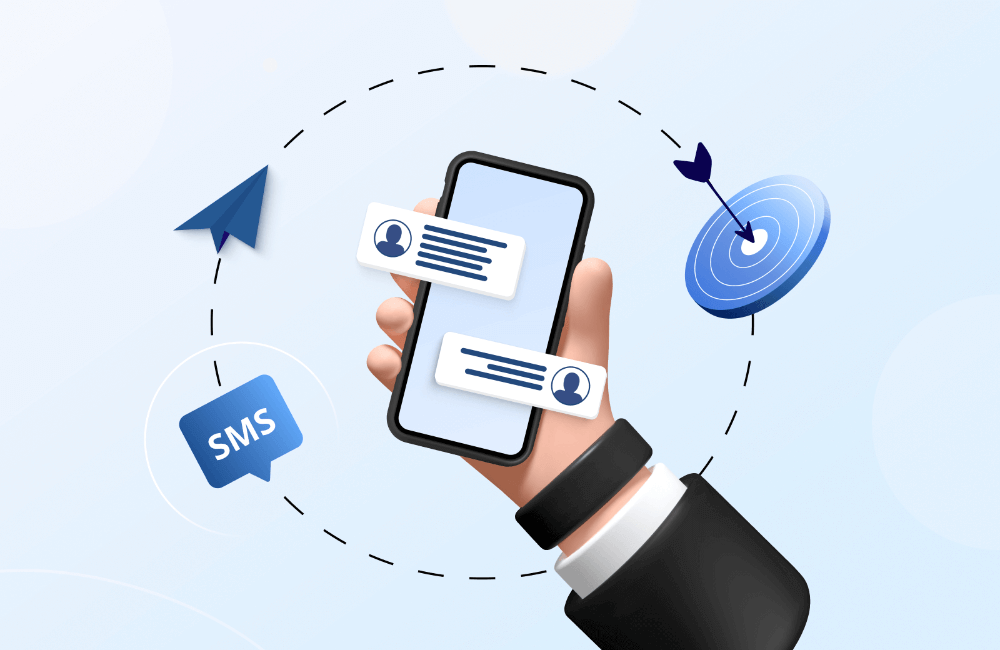📑Table of Contents:
- Why SMS Campaigns Matter
- Retail: Driving Flash Sale Urgency
- Food and Beverage: Boosting Repeat Orders
- Healthcare: Reducing Missed Appointments
- Hospitality: Personalizing Guest Experience
- Finance: Protecting Customers with Alerts
- Events: Selling Out Faster
- Lessons from Successful SMS Campaigns
- How to Apply These Tactics
- The Future of SMS Campaigns
- Final Thoughts

SMS marketing is powerful. Open rates reach over 90%. Click-through rates beat email. Customers read messages in minutes. But success depends on strategy. Not every campaign drives results. The best ones feel personal, relevant, and timely.
To prove it, let’s look at real-world examples. These case studies show how different brands use SMS to connect with customers. You will also see what makes these campaigns work and how you can apply the same tactics.
Why SMS Campaigns Matter
Text messaging feels direct. It reaches people instantly. Customers don’t need apps or logins. A simple message can inspire action, build loyalty, or solve problems.
Moreover, SMS works across industries. Retailers send offers. Restaurants take reservations. Healthcare providers remind patients about appointments. Even banks use SMS to confirm transactions.
Now, let’s explore campaigns that achieved results.
Retail: Driving Flash Sale Urgency
A clothing brand launched a one-day flash sale. Instead of emailing thousands, they sent short texts.
“Today only! 40% off all summer styles. Shop now 👉 [link].”
The message was clear, urgent, and personal. Customers clicked quickly because they knew time was short. The campaign generated a 35% spike in sales in just 24 hours.
Why it worked:
- Clear urgency
- Short and direct copy
- Easy action with a link
Food and Beverage: Boosting Repeat Orders
Domino’s used SMS to encourage reorders. Customers received a message:
“Hungry? 🍕 Reorder your last meal in seconds: [link].”
The link opened a personalized menu showing their last purchase. Many customers reordered immediately.
Why it worked:
- Personalized message
- Simple call to action
- Visual element (emoji) for engagement
This campaign turned casual buyers into loyal repeat customers.
Healthcare: Reducing Missed Appointments
A medical clinic struggled with no-shows. They started sending SMS reminders:
“Hi Sarah, your check-up is tomorrow at 10 AM. Reply YES to confirm or call if you need to reschedule.”
Patients responded instantly. The clinic cut missed appointments by 40%. Staff saved hours of follow-up calls.
Why it worked:
- Friendly tone
- Clear next steps
- Two-way communication
Healthcare providers everywhere can benefit from similar reminders.
Hospitality: Personalizing Guest Experience
A boutique hotel used SMS for guest services. Before arrival, guests received:
“Hi Alex, we can’t wait to welcome you! Would you like early check-in today? Reply YES and we’ll arrange it.”
Guests felt valued. Many opted in for upgrades, which boosted revenue.
Why it worked:
- Warm and personal tone
- Extra value for the guest
- Opportunity to upsell without pressure
This shows SMS isn’t just about marketing. It’s also about customer care.
Finance: Protecting Customers with Alerts
A bank used SMS to prevent fraud. Customers got instant alerts:
“Unusual activity detected on your account. Reply 1 if this is you, 2 if not.”
Many customers confirmed fraud within minutes, saving money and trust.
Why it worked:
- Speed and urgency
- Simple options
- Strong trust factor
In finance, reliability is everything. SMS makes it possible.
Events: Selling Out Faster
A concert promoter used SMS to boost ticket sales. Subscribers received:
“Pre-sale starts NOW! Grab your tickets before they’re gone 🎶 [link].”
Fans clicked immediately. Many events sold out in hours.
Why it worked:
- Exclusive access
- Exciting tone
- Clear call to action
Event marketers now use SMS for both ticket sales and live updates.
Lessons from Successful SMS Campaigns
Looking at these examples, some patterns stand out:
- Keep it short and clear
- Use urgency, but don’t overdo it
- Add personalization whenever possible
- Make the next step simple with a link or reply option
- Match the tone to your brand voice
Customers respond when texts feel useful, relevant, and timely.
How to Apply These Tactics
Want to build campaigns that work? Start small. Test one idea at a time. For example, try appointment reminders, flash sales, or personalized offers. Track results. Learn what your audience loves.
Next, segment your list. Not every customer wants the same message. A loyal buyer deserves a reward. A new subscriber may need a welcome offer.
Finally, focus on value. If every text solves a problem or creates excitement, people will stay subscribed.
The Future of SMS Campaigns
With AI and rich media, SMS is only getting stronger. Soon, you won’t just send texts. You’ll send interactive messages with images, buttons, and even payments built in. But the core rule will remain the same: keep it personal and relevant.

Final Thoughts
SMS marketing works because it’s direct, personal, and fast. The examples above prove that real brands can use it to increase sales, reduce no-shows, improve loyalty, and protect customers.
Your business can do the same. Start by focusing on simple campaigns with clear goals. Then, grow with personalization and richer experiences. SMS is not just a message—it’s a conversation. And when done right, it’s one of the most powerful tools in digital marketing.
